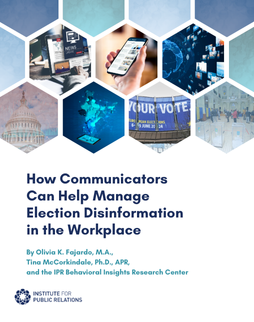This blog is based on the original study in the Public Relations Journal.
When events of societal injustice occur and governmental responses appear inadequate, citizens often turn their focus to the leaders of companies they buy from, work for, and trust. Whether they want a void to be filled, a right to be wronged, or simply to have their own thoughts and feelings echoed by the brands they love, stakeholders increasingly expect companies to take stances on divisive socio-political issues. Such focusing events – from the Supreme Court’s decision to overturn Roe v. Wade to Russia’s invasion of Ukraine, to name just a few recent examples – present both challenges and opportunities for companies to maintain, gain, or lose visibility in the crowded marketplace of media attention.
Given this backdrop, our study, “Words, Money, or Action? How Corporate Social Advocacy Drove Media Coverage in Response to the Black Lives Matter Protests of 2020,” examines whether companies are rewarded with greater media visibility when they choose to speak out or otherwise act upon an issue of social (in)justice. This is a critical question for PR and communications professionals who seek to assess and quantify their organization’s reputational appearances across the media landscape.
Put simply, we discovered that the sooner a company issued a statement in response to the event—in this study, the killing of George Floyd by Minneapolis police and ensuing nationwide Black Lives Matter protests—the greater share of impactful media coverage that company received in the days and weeks that followed. While this may be an obvious or expected result for some, this study is one of the first and only to provide real-world data, evidence, and support for it.
Indeed, our collective understanding has been limited in terms of whether and to what extent corporate social advocacy has measurable impacts on key performance indicators within public relations, such as volume, reach, or quality earned media. In fact, we found that many Fortune 500 companies waited for weeks to pass, and some never spoke up at all on the issue of racial injustice. Subsequently, those companies saw little to no gains in media visibility in the wake of these events. Those that spoke up immediately, meanwhile, received a greater share of high-impact—i.e., high reach, more viral, and positive—news coverage.
Our study also examined the effect that pledging a donation or announcing the implementation of a diversity, equity, and inclusion (DEI)-related workplace initiative has on the quality of a company’s earned media. While we found some weak evidence that larger donations generate more impactful earned media coverage than smaller ones, we found no evidence that the announcement of DEI initiatives had an impact on earned media. Although surprising, there are several possible explanations for this counterintuitive finding. First, we do not believe it suggests that community grants targeted to social justice causes and DEI workplace initiatives are not worthwhile and should not be undertaken for a variety of reasons, if not simply as ends in and of themselves. Rather, our takeaway is that many PR and communications teams are still learning how to leverage DEI initiatives within their media relations strategy. By recognizing the importance of these programs and working closer with the DEI function (as well as internal communications and investor relations, amongst others) within their organization, PR professionals should develop strategies to promote better news visibility around them and ensure they are aligned with the company’s media image.
Ultimately, while silent observation or other non-communicative modes of responses may be legitimate and appropriate in some circumstances of societal discord, our findings show that in the case of the Black Lives Matter protests of 2020 and in the context of a company’s earned media strategy, speaking out swiftly against the killing of George Floyd—and, more generally, against racism, prejudice, and discrimination across the U.S.—generated favorable media coverage for the companies that did so. Regardless of the specific lessons PR practitioners, communication professionals, and other researchers can learn from this study, one of our basic aims was to demonstrate that the public and media do in fact pay close attention to what companies say and do (or don’t do) in the aftermath of significant social, legal, or political events. From a media relations standpoint, it’s important for companies to think deeply about how their words and actions—or absence thereof—will be portrayed by the journalists, activists, and influencers who shape the news.
Kyle A. Heatherly, MSSc, Cision
Sung-Un Yang, Ph.D., Indiana University, Bloomington
Nicholas Browning, Ph.D., Indiana University, Bloomington
Eugene Kim, M.A., Indiana University, Bloomington



